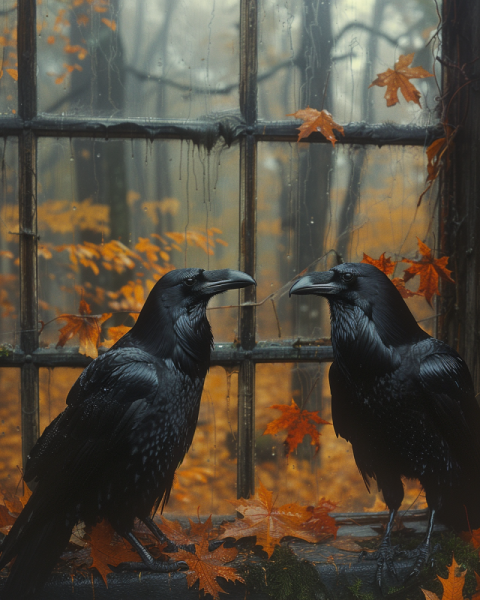



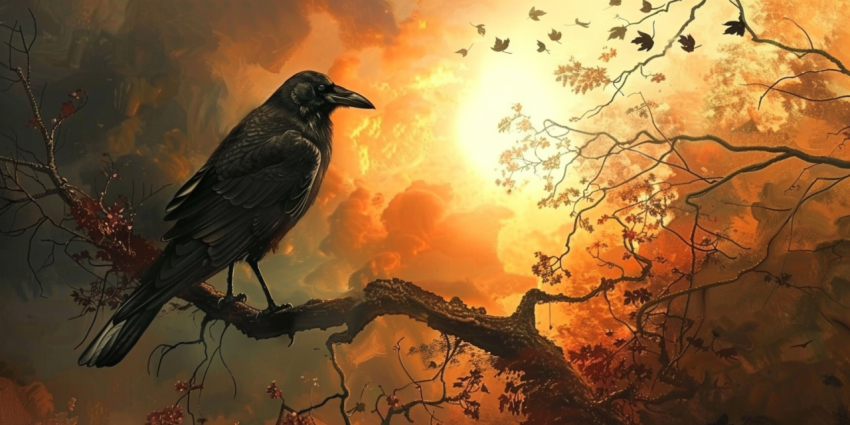

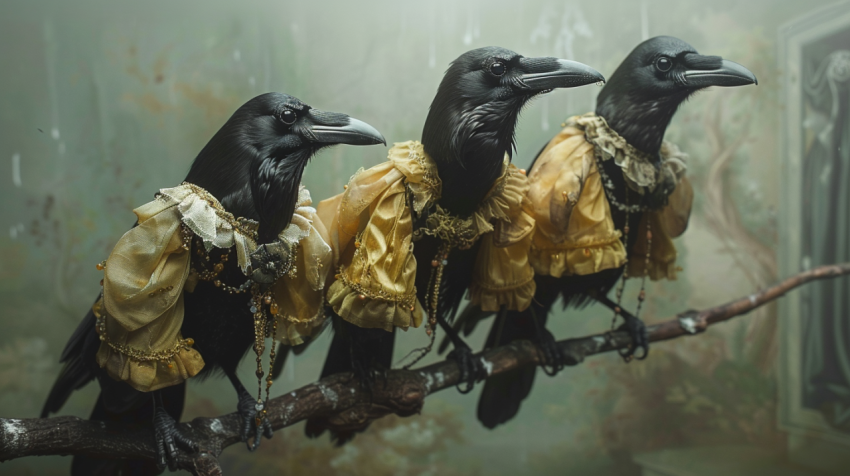
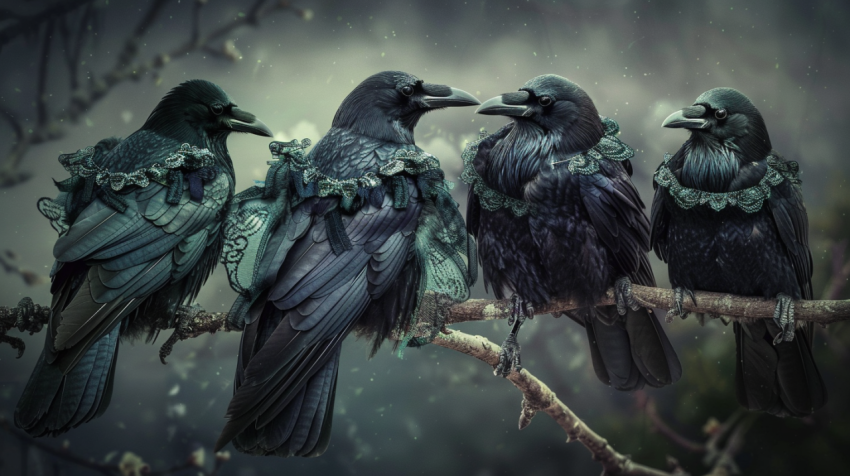
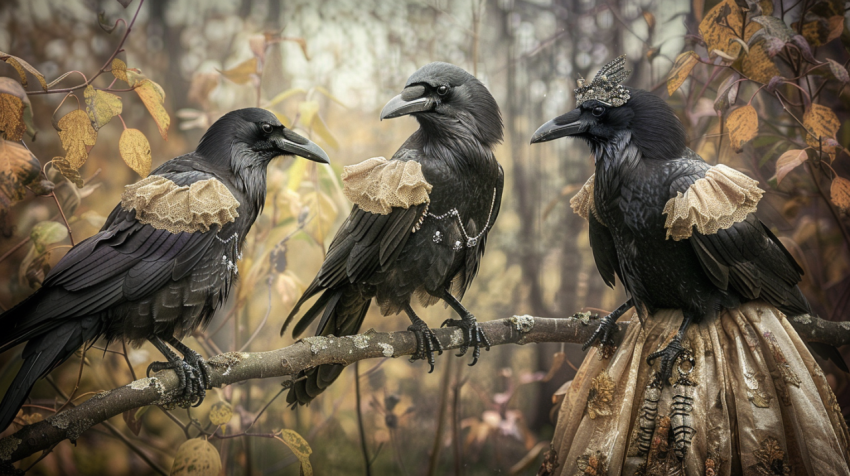
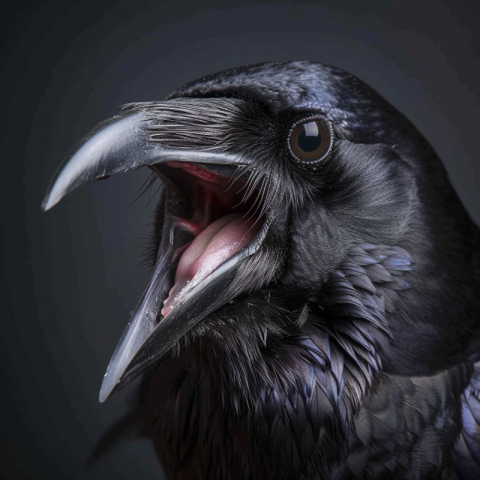


Crows: Intelligent, Adaptable, and Often Misunderstood
Crows, with their sleek black plumage, raucous calls, and undeniable intelligence, are among the most intriguing and often misunderstood birds. Far from being mere scavengers or harbingers of ill omen, crows are highly adaptable, social creatures that play important roles in their ecosystems. This comprehensive guide will explore the captivating world of crows, examining their defining characteristics, cognitive abilities, diverse species, global distribution, social structures, communication methods, diet, breeding behaviors, interactions with humans, and their place in folklore and mythology.
What Defines a Crow?
Crows belong to the genus Corvus within the family Corvidae, which also includes ravens, jays, magpies, and nutcrackers. There are over 40 species of crows found worldwide, exhibiting a range of sizes, behaviors, and habitat preferences.
Key Characteristics of Crows:
- Black Plumage: Most crow species are predominantly black, although some may have patches of gray or white.
- Strong, Stout Beak: Crows have a strong, slightly curved beak that is well-suited for their omnivorous diet.
- Intelligent Eyes: Crows have intelligent, expressive eyes that are typically dark brown or black.
- Adaptable Nature: Crows are highly adaptable birds, capable of thriving in a wide range of environments, including urban, suburban, and rural areas.
- Social Behavior: Many crow species are highly social, living in family groups or larger flocks.
- Complex Communication: Crows have a complex system of vocalizations, including caws, rattles, and clicks, which they use to communicate with each other.
- Omnivorous Diet: Crows are opportunistic omnivores, consuming a wide variety of plant and animal matter.
Remarkable Intelligence and Cognitive Abilities:
Crows are renowned for their intelligence, exhibiting cognitive abilities that rival those of some primates.
- Problem-Solving: Crows have demonstrated remarkable problem-solving skills in experimental settings, including using tools to access food and solving multi-step puzzles.
- Tool Use: Crows are among the few bird species known to use tools in the wild. For example, New Caledonian crows are famous for their ability to fashion and use tools, such as twigs and leaves, to extract insects from crevices.
- Facial Recognition: Studies have shown that crows can recognize individual human faces and remember those who have threatened them or treated them favorably. They may even pass this information on to other crows.
- Planning and Caching: Crows often cache (hide) food for later retrieval, demonstrating an ability to plan for the future.
- Play Behavior: Crows, particularly young birds, engage in play behavior, such as dropping and catching objects in mid-air, which may help them develop coordination and social skills.
Diverse Crow Species:
While there are many crow species worldwide, some of the most well-known include:
- American Crow (Corvus brachyrhynchos): A common and widespread crow found throughout North America, known for its intelligence and adaptability.
- Carrion Crow (Corvus corone): Found across Europe and Asia, the Carrion Crow is an all-black species similar in appearance to the American Crow.
- Hooded Crow (Corvus cornix): Closely related to the Carrion Crow, the Hooded Crow has a distinctive gray body with a black head, wings, and tail. It is found in parts of Europe and Asia.
- Rook (Corvus frugilegus): A highly social crow found across Europe and Asia, the Rook is known for its bare, whitish face and its habit of nesting in large colonies called rookeries.
- New Caledonian Crow (Corvus moneduloides): Native to the island of New Caledonia in the South Pacific, this crow is famous for its advanced tool-using abilities.
- Fish Crow (Corvus ossifragus): Found along the eastern and southeastern coasts of the United States, the Fish Crow is smaller than the American Crow and has a more nasal call.
- Northwestern Crow (Corvus caurinus): Found along the northwestern coast of North America, from Washington to Alaska. This species is virtually identical to the American Crow in appearance but has a slightly different call.
Habitat and Distribution:
Crows are found on every continent except Antarctica and inhabit a wide range of environments:
- Adaptability: Crows are highly adaptable and can thrive in diverse habitats, from forests and woodlands to grasslands, deserts, and coastal areas.
- Urban and Suburban Environments: Many crow species have adapted exceptionally well to living near humans and are common sights in cities and suburbs.
- Agricultural Areas: Crows are also found in agricultural areas, where they may feed on crops but also help to control pests.
Social Structure and Communication:
- Family Groups: Many crow species live in family groups, consisting of a breeding pair and their offspring from previous years. These young birds often help their parents raise new broods.
- Flocking: Outside of the breeding season, crows may gather in large flocks, sometimes numbering in the thousands, for foraging and roosting.
- Cooperative Breeding: In some species, such as the American Crow, cooperative breeding occurs, where non-breeding individuals help raise the young of a dominant pair.
- Complex Vocalizations: Crows have a complex repertoire of calls, including caws, rattles, clicks, and even mimicry of other sounds. These vocalizations are used for a variety of purposes, such as:
- Alarm Calls: Warning other crows of danger.
- Contact Calls: Maintaining contact with family members or flock mates.
- Territorial Defense: Proclaiming and defending territories.
- Food Location: Alerting others to food sources.
- Body Language: Crows also use body language, such as postures and displays, to communicate with each other.
Diet and Feeding:
Crows are omnivores with a highly varied diet:
- Insects: A significant part of their diet, especially during the breeding season.
- Seeds and Grains: Crows consume a variety of seeds and grains, including agricultural crops like corn and wheat.
- Fruits and Berries: They also eat various fruits and berries.
- Nuts: Crows are known for their ability to crack open nuts, sometimes by dropping them from a height onto a hard surface.
- Small Animals: They may prey on small mammals, birds, eggs, reptiles, amphibians, and other invertebrates.
- Carrion: Crows are opportunistic scavengers and will readily feed on carrion (dead animals).
- Garbage and Scraps: In urban and suburban areas, crows often scavenge for food in garbage and other human-generated waste.
Breeding and Nesting:
- Monogamy: Most crow species are monogamous, forming pair bonds that may last for several years or even for life.
- Nest Building: Crows build bulky nests made of sticks and twigs, lined with softer materials like grass, moss, and hair. Nests are typically located in trees, but some species may nest on cliffs or even on human-made structures.
- Eggs: Female crows lay a clutch of 3-9 eggs, which are typically bluish-green with brown or olive markings.
- Incubation: The female primarily incubates the eggs for about 17-20 days, while the male provides her with food.
- Chick Rearing: Both parents feed the chicks a diet of insects and other protein-rich foods. In species with cooperative breeding, other family members may also help.
- Fledging: Crow chicks fledge (leave the nest) after about 4-5 weeks but may remain with their parents for several months or even years.
Interactions with Humans:
Crows have a complex relationship with humans:
- Agricultural Pests: In some areas, crows are considered agricultural pests due to their consumption of crops like corn and other grains.
- Urban Nuisance: In cities, crows can sometimes be seen as a nuisance due to their noise, droppings, and scavenging habits.
- Objects of Fascination: On the other hand, crows are also objects of fascination for many people due to their intelligence, adaptability, and complex social behaviors.
- Subjects of Research: Their cognitive abilities make them valuable subjects for scientific research on animal intelligence.
Crows in Culture, Folklore, and Mythology:
Crows have played significant roles in human culture, folklore, and mythology around the world:
- Omens and Prophecy: In some cultures, crows are seen as omens, often associated with death, misfortune, or war. This may be due to their black plumage and their habit of feeding on carrion.
- Tricksters and Creators: In other cultures, particularly among some Native American tribes, crows are viewed as trickster figures or even as creators or transformers of the world.
- Intelligence and Wisdom: Due to their intelligence, crows are sometimes associated with wisdom and knowledge.
- Messengers: In some traditions, crows are seen as messengers between the human and spirit worlds.
Conservation Status:
Most crow species are currently not considered threatened, and many are thriving in human-modified environments. However, some localized populations may face threats:
- Habitat Loss: While crows are adaptable, the loss of natural habitats due to urbanization and agriculture can still impact some populations.
- Persecution: In some areas, crows are persecuted due to their perceived status as pests.
- Pesticide Use: The use of pesticides can harm crows directly or indirectly by reducing their food supply.
- West Nile Virus: In North America, crows have been particularly susceptible to West Nile virus, which has caused significant declines in some populations.
Conclusion:
Crows are remarkable birds that deserve our respect and admiration. Their intelligence, adaptability, complex social lives, and ecological importance make them fascinating subjects of study and observation. While they may sometimes come into conflict with human interests, their ability to thrive in a changing world is a testament to their resilience. By understanding and appreciating these often-misunderstood creatures, we can gain a deeper appreciation for the intricate web of life and the remarkable diversity of the avian world.
Crow, American Crow, Carrion Crow, Hooded Crow, Rook, New Caledonian Crow, Fish Crow, Northwestern Crow, Crow Species, Crow Facts, Crow Intelligence, Crow Behavior, Crow Communication, Crow Calls, Crow Sounds, Crow Diet, Crow Food, What Do Crows Eat, Crow Habitat, Crow Distribution, Crow Nest, Crow Eggs, Crow Chicks, Crow Lifespan, Crow Flight, Crow Feathers, Crow Family, Crow Flock, Crow Conservation, Are Crows Endangered, Crow Symbolism, Crow Meaning, Crow Mythology, Crow Folklore, Crow Pictures, Crow Videos, Crow Identification, Crow vs Raven, Crow as Pets, Crow Problems, Crow Pest.

